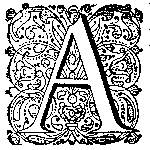Competition, Choice and Diversity in the Newspaper Trade of the Dutch Golden Age
DOI:
https://doi.org/10.18352/emlc.59Keywords:
newspapers, Dutch Republic, periodicity, competition, regulation, advertising, prices, Abraham Casteleyn, Gerard Lodewijk van der Macht, Adriaen VlacqAbstract
This article expands on the themes of choice and diversity within a national, competitive news market in the seventeenth-century Dutch Republic. It is often suggested that early newspapers largely copied one another. But that did not mean that these newspaper publishers all made the same choices, or that they adopted the same tone. Rather, they embraced and copied what they liked, and ignored what they did not. The newspaper trade in the Dutch Republic was driven by competition, innovation and diversity. The standards of what made a “good” newspaper were constantly refined during the seventeenth century. Publishers made conscious choices concerning the style, format, price and content of their papers in order to maximise their commercial potential. The diversity of titles was vital to the stimulation and later sustenance of the growing market for periodical news. News readers in the Dutch Republic were offered the greatest range of titles, complementing one another in content and style. If we look close enough at the titles available to us, we can come to a refined understanding of the early burgeoning business of news.Downloads
Download data is not yet available.

Published
03-09-2018
Issue
Section
Article
License
Copyright (c) 2018 Arthur der Weduwen

This work is licensed under a Creative Commons Attribution-NonCommercial 4.0 International License.
How to Cite
der Weduwen, A. (2018). Competition, Choice and Diversity in the Newspaper Trade of the Dutch Golden Age. Early Modern Low Countries, 2(1), 7-23. https://doi.org/10.18352/emlc.59





